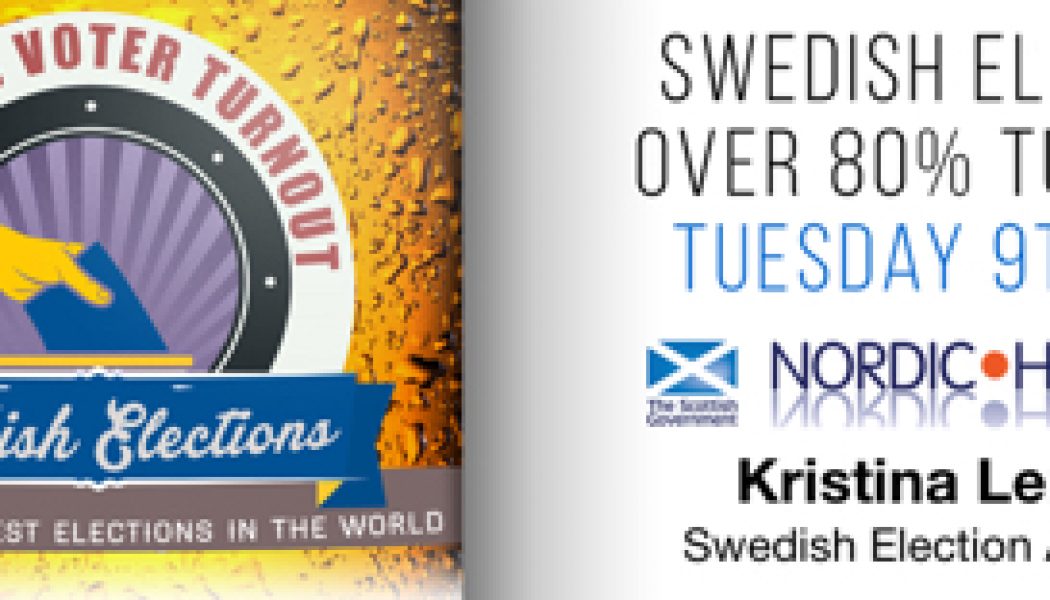Swedish Elections – Kristina Lemon – Digital Notes
Tuesday June 9th 2015, 6pm
Speaker: Kristina Lemon from the Swedish Elections Authority
Chair: Lesley Riddoch, broadcaster & writer
Host : Alex Rowley MSP
Scottish Parliament, Edinburgh
The recent UK General Election had a ‘high’ turnout of 66%. The last General Election in Sweden produced no single party with a working majority – Swedes have used PR since 1909 and coalition government is normal. So is last year’s turnout of 85.8% – higher even than Scotland’s record breaking referendum. The turnout for the last council elections was 38% in Scotland but 82% in Sweden.
How do the Swedes do it? Elections are on a Sunday. All elections (for municipal and county councils and general elections) take place on the same day — the second Sunday of September every four years. So councils benefit from the General Election buzz. Voters can vote 18 days before polling day, and change their vote on election-day itself. Anyone can form a party, even quite late in the process. Voters don’t have to register – the Swedish Election Authority simply extracts information from the central population register.
The Swedish system aims to give parties a number of seats proportional to its support among voters. Even TV and radio coverage is different – debates with 7 party leaders are entirely unremarkable. It’s all scrupulously fair – what do you expect from the first country in the world to introduce freedom of the press, in 1766?
Could Scottish democracy learn from a system like this? Kristina Lemon of the Swedish Election Authority brilliantly described how the Swedish electoral system works. She spoke to the capacity audience about the details of the Swedish electoral system and took questions within her 80 minute presentation.
Presentation
You can download her slides below and listen to the presentation on the Nordic Horizons Soundcloud channel.
Download Swedish Electoral System by Kristina Lemon here.
Vimeo Video Resources
Soundcloud Podcasts
And you can listen to the full presentation including audience questions below.

